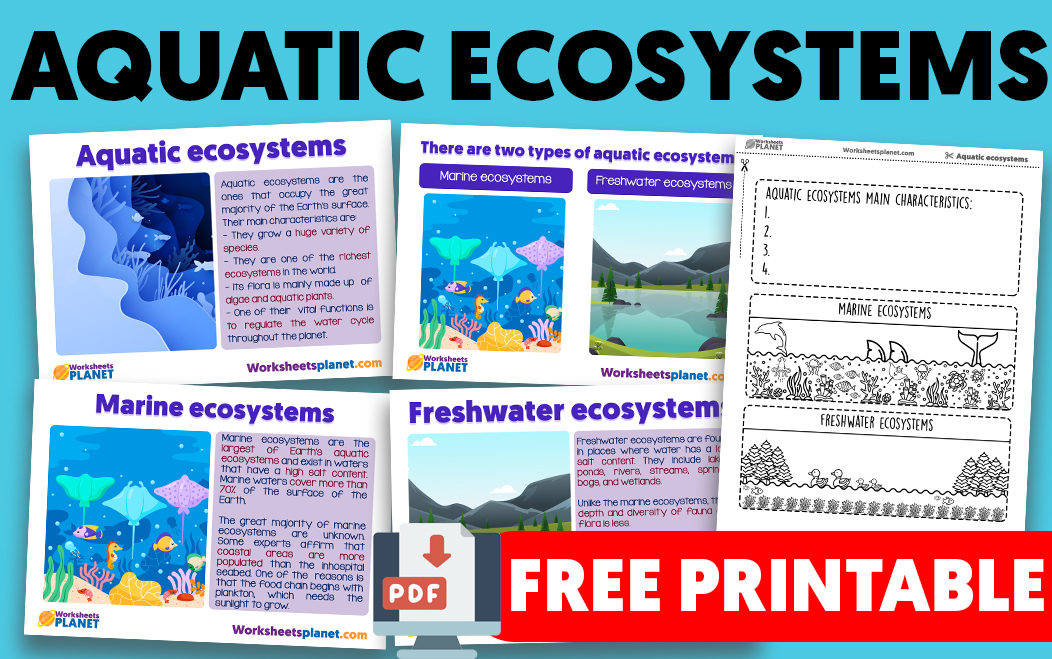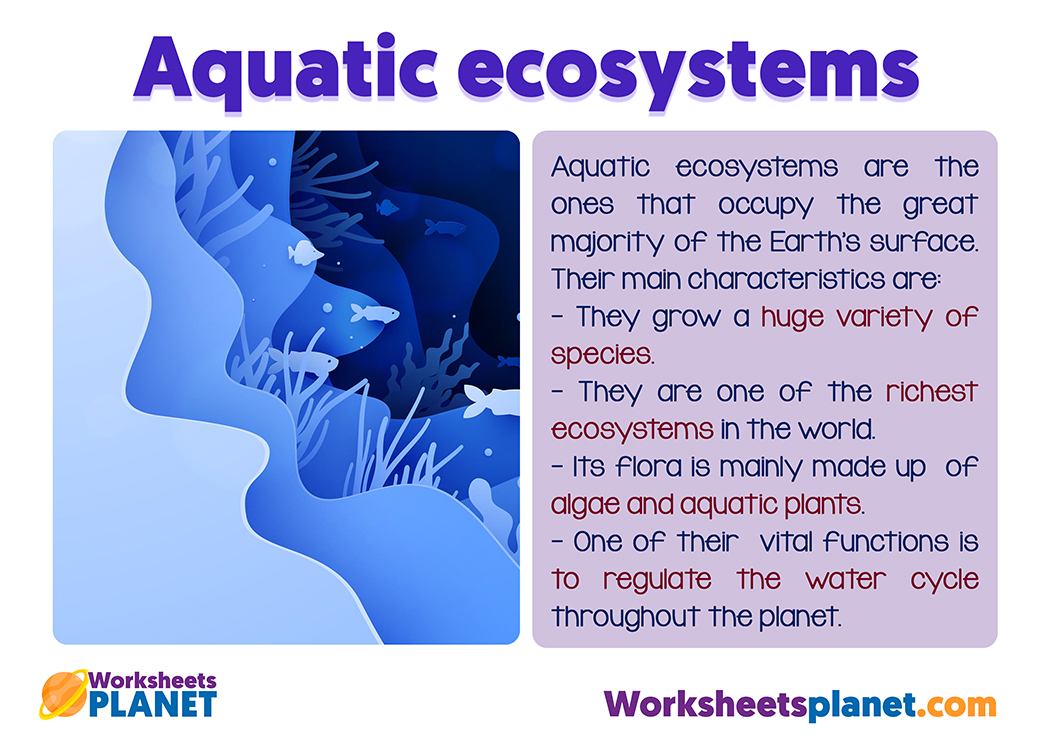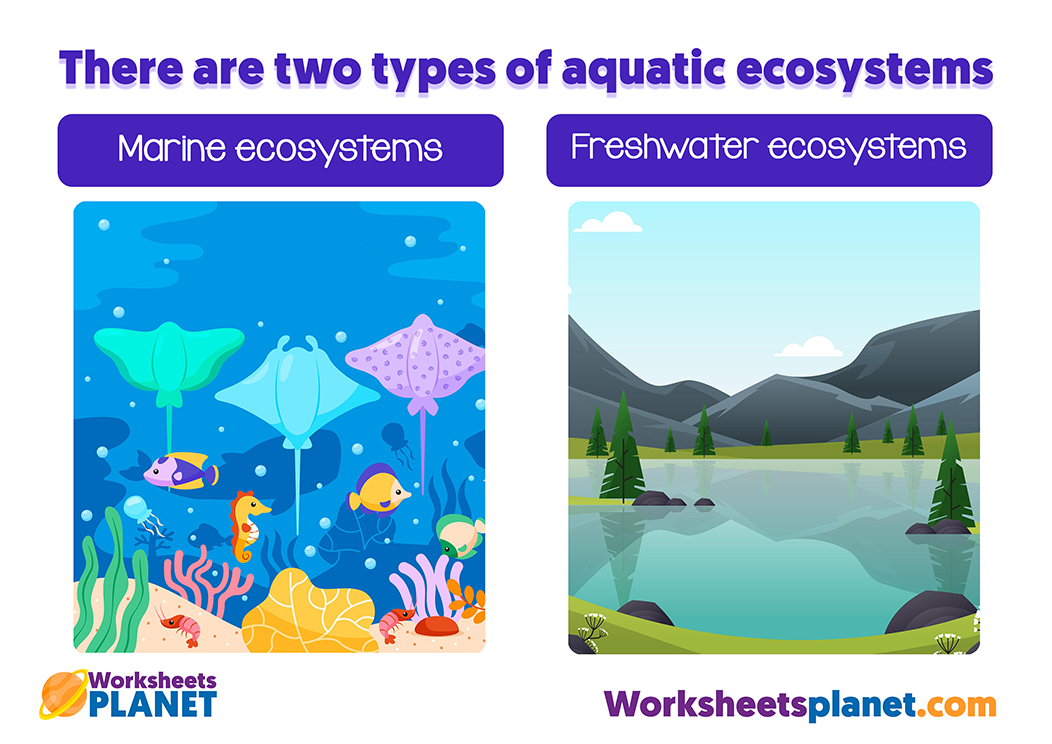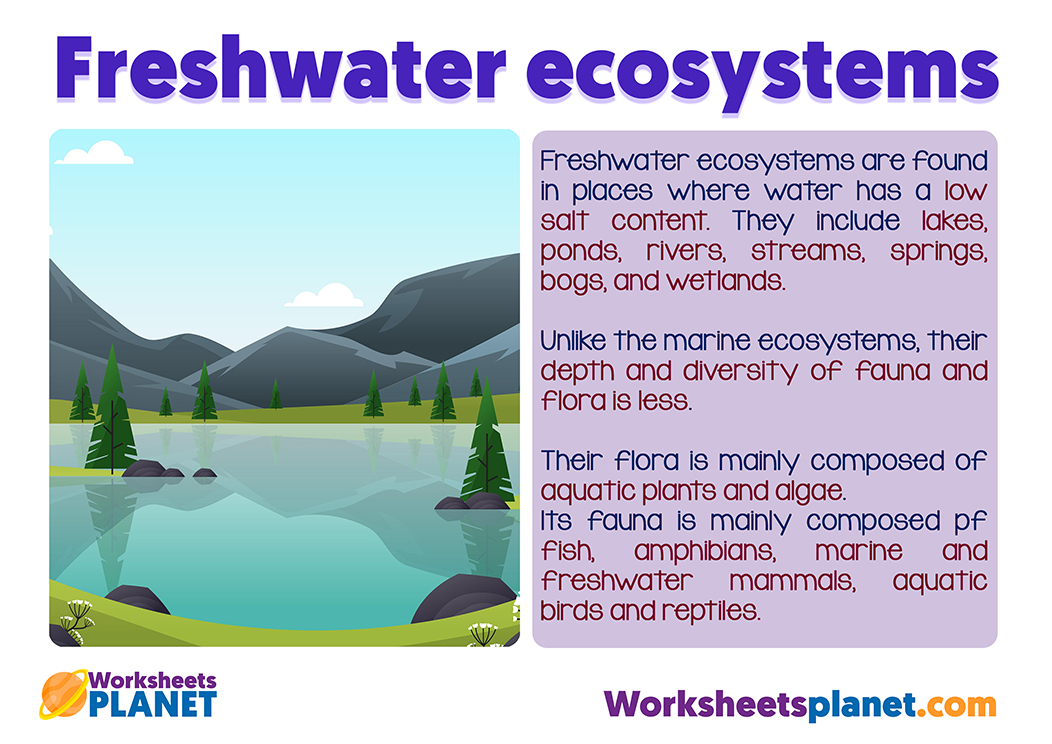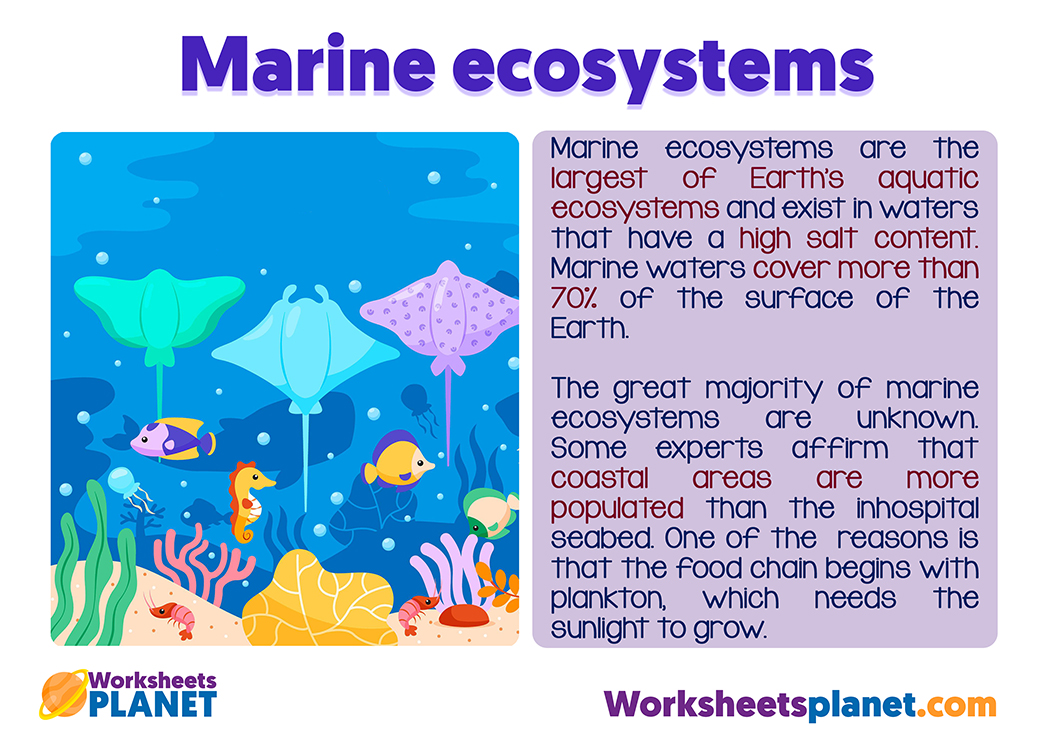Hey super teachers! Here you have a new educational resource for your science classes. It is important to teach the aquatic ecosystems when you are a Science teacher. Here you can find a complete bundle with theory explanations and an easy activity to practice the content.
What are the aquatic ecosystems?
Aquatic ecosystems are the ones that occupy the great majority of the Earth’s surface. Their main characteristics are:
- They grow a huge variety of species.
- They are one of the richest ecosystems in the world.
- Its flora is mainly made up of algae and aquatic plants.
- One of their vital functions is to regulate the water cycle throughout the planet.
What are the types of aquatic ecosystems ?
There are two types of aquatic ecosystems: marine ecosystems and freshwater ecosystems.
Marine ecosystems are the largest of Earth’s aquatic ecosystems and exist in waters that have a high salt content. Marine waters cover more than 70% of the surface of the Earth. The great majority of marine ecosystems are unknown. Some experts affirm that coastal areas are more populated than the inhospital seabed. One of the reasons is that the food chain begins with plankton, which needs the sunlight to grow.
Freshwater ecosystems are found in places where water has a low salt content. They include lakes, ponds, rivers, streams, springs, bogs, and wetlands. Unlike the marine ecosystems, their depth and diversity of fauna and flora is less. Their flora is mainly composed of aquatic plants and algae. Its fauna is mainly composed pf fish, amphibians, marine and freshwater mammals, aquatic birds and reptiles.
